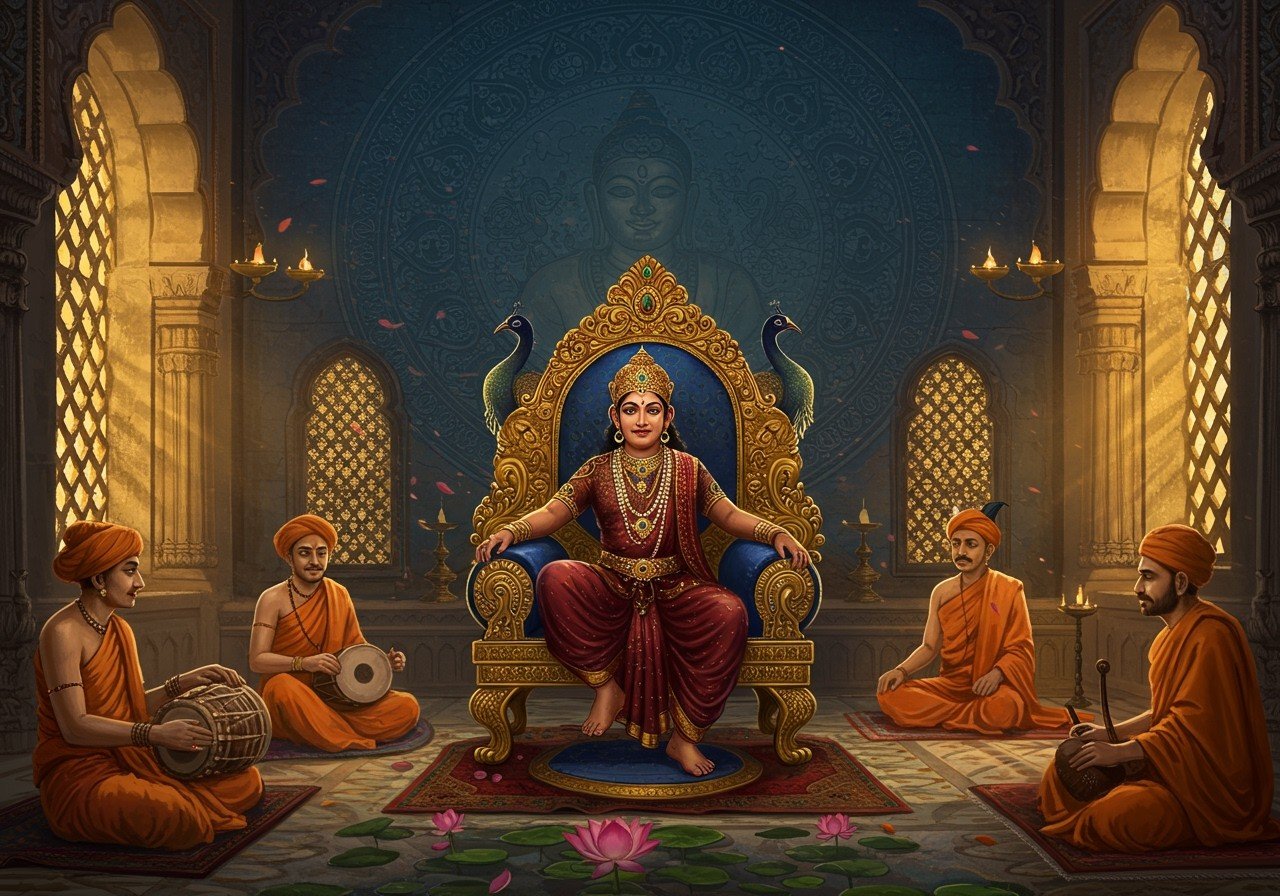
The Rai Dynasty holds a significant place in the annals of Indian history, particularly in the Sindh region. This dynasty, documented in the Chachnama (a Persian historical work), ruled from approximately 489 to 632 CE. This comprehensive guide delves into the dynasty’s origins, ascension, and contributions, exploring the legacies of its key rulers and their impact on the region’s traditions and culture. For those seeking authentic puja items, poojn.in offers a wide selection.
Historical Context
To truly grasp the Rai Dynasty’s significance, it’s essential to understand its historical context. The dynasty originated in Sindh, with early rulers consolidating power and eventually expanding their influence. Their reign spanned a substantial geographical area, marked by pivotal battles, strategic alliances, and notable socio-political shifts. The Rai Dynasty’s rule in Sindh began around the 6th century CE, coinciding with the rise of Buddhism in the region. This period also witnessed significant trade advancements, which played a vital role in the dynasty’s economic prosperity.
- Early Rulers and Their Influence: The dynasty’s founding figures were instrumental in establishing its foundation and setting the stage for its expansion. These rulers implemented administrative structures and policies that shaped the dynasty’s early trajectory.
- Geographical Reach and Expansion: The Rai Dynasty’s dominion covered a considerable area, encompassing key regions within Sindh. This expansion involved strategic alliances and military campaigns, which solidified their control and influence.
- Socio-Political Climate and Its Impact: The Rai Dynasty emerged during a period of significant socio-political change. This dynamic environment shaped the dynasty’s interactions with neighboring powers and influenced its internal policies.
- Key Conflicts and Alliances: The dynasty’s rise was marked by strategic alliances and crucial battles. These events played a decisive role in shaping the dynasty’s territorial boundaries and political influence within the region.
- Administrative and Governance Model: The Rai rulers implemented a distinct administrative system, which contributed to the stability and prosperity of their realm. This system facilitated efficient governance and resource management.
- Religion and Culture: The Rai Dynasty was notably Buddhist, as documented in historical texts. This religious affiliation influenced the dynasty’s cultural practices and interactions with other religious groups.
The Rai Dynasty of Sindh: A Closer Look
The Rai Dynasty’s reign in Sindh commenced around the 6th century CE, marked by the leadership of key figures like Rai Diwaji. His reign ushered in an era of economic prosperity, facilitated by advancements in trade. The dynasty also embarked on significant architectural projects, leaving behind a legacy of impressive structures. Their interactions with neighboring regions played a crucial role in shaping the political landscape of the time.
- Rai Diwaji’s Reign and Contributions: Rai Diwaji, a prominent figure in the dynasty, played a pivotal role in its early successes. His leadership laid the groundwork for economic growth and territorial expansion.
- Economic Growth and Trade Advancements: The Rai Dynasty oversaw a period of economic prosperity, driven by flourishing trade networks and strategic commercial policies. These advancements contributed significantly to the dynasty’s wealth and influence.
- Architectural Endeavors and Their Significance: The dynasty’s architectural projects showcased their craftsmanship and contributed to the region’s cultural landscape. These structures served both practical and symbolic purposes, reflecting the dynasty’s values and aspirations.
- Interactions with Neighboring Regions and Empires: The Rai Dynasty engaged in complex diplomatic and military interactions with neighboring powers. These interactions played a crucial role in shaping the political dynamics of the region and influencing the dynasty’s own trajectory.
- Factors Contributing to the Dynasty’s Decline: Several factors contributed to the eventual decline of the Rai Dynasty in Sindh. These included external pressures, internal conflicts, and changing political landscapes.
- Archaeological Discoveries and Insights: Archaeological findings have shed light on various aspects of the Rai Dynasty, providing valuable insights into their culture, lifestyle, and historical context.
Notable Rulers of the Rai Dynasty
Several rulers shaped the Rai Dynasty’s legacy. Each contributed uniquely to the dynasty’s story, leaving their mark on its history and development.
- Rai Diwaji: As a founding figure, Rai Diwaji laid the foundation for the dynasty’s future prosperity and influence.
- Other Prominent Rulers: While historical records may not be as detailed for other rulers, their contributions collectively shaped the dynasty’s journey and impact.
Cultural and Religious Significance
The Rai Dynasty, being Buddhist, played a significant role in the religious landscape of the region. Their patronage of Buddhism influenced cultural practices and artistic expression.
- Influence on Religious Practices: The dynasty’s adherence to Buddhism contributed to the spread and development of the religion in the region.
- Cultural Contributions and Artistic Expression: The Rai Dynasty’s patronage of the arts and culture led to a flourishing of artistic expression, enriching the region’s cultural heritage.
Legacy and Lasting Impact
The Rai Dynasty’s legacy continues to be studied and appreciated for its contributions to the history of Sindh. Their influence is reflected in various aspects of the region’s cultural heritage.
Poojn.in, India’s leading online store for spiritual and puja products, provides a wide range of authentic items for your religious needs. Visit poojn.in today to explore our collection.


